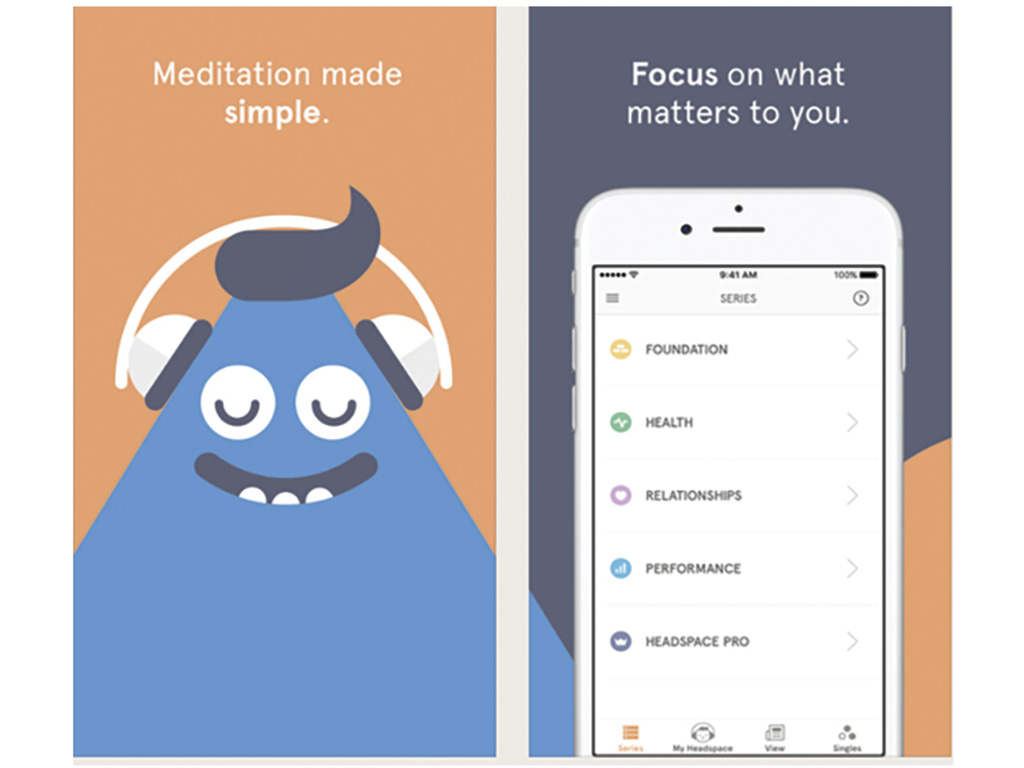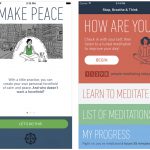How to Tackle dental stress
Morag Powell outlines the various tools and options available to dental professionals to manage and control their stressful lives
There is no doubt that dentistry is a high-stress profession. Recent studies have reported that dental teams are subject to a variety of stress-related physical and emotional problems 1,2,3,4. These include heart disease, high blood pressure, adrenal fatigue, alcoholism, insomnia, depression and anxiety 5. Stress can be defined as ‘‘an adverse reaction that people have to excessive pressure or other types of demand placed on them’’.
Research suggests that the top five stressors in dentistry include running behind schedule, causing pain to our patients, heavy workloads, patient management and the treatment of anxious patients 2. As well as these factors, we have litigation on the increase 6 (the UK has now taken over the US with regards to litigation cases), and the GDC’s Fitness to Practise committees to worry about. When you take all of these factors into account, it is unsurprising that stress levels in dentistry are soaring to dangerously high levels. Yet, there is a lack of proactive measures being taken within our working environment and teams to address this issue of stress.
The signs of stress in an individual include feeling tense, feelings of anger and frustration, worry and anxiety, lack of concentration at home and at work, impaired sleep, depression, lack of interest in hobbies, poor appetite, comfort eating, increased consumption of alcohol and other stimulants to help to cope with the emotional impacts of stress. This can manifest within the dental team in many ways which include conflict within the team, absenteeism, a high turnover rate in staff, low morale, increased complaints, poor performance while at work and at times a lack of care in the standard of treatment provided. It is not only in the workplace that the effects of stress can manifest. They can also be present in the home and can cause problems with personal relationships. So, as there is no doubt that dentistry is a high-stress profession, what steps can we take within the dental team to prevent this?
We are regularly given advice on how to lead healthy lives, but sometimes we are so caught up in the stresses of life and work that we don’t know how or where to begin. I frequently hear colleagues suffering with stress say that they do not have time to fit exercise and attending the gym into their life due to their workload, commuting and their family commitments. It is only when they reach near-breaking point with their stress levels that they consider introducing some form of stress management into their life. I prefer a more preventive approach with stress involving a combination of regular physical exercise and well being activities such as yoga or tai chi.
I have been practising yoga for more than 15 years; initially it was the only type of exercise that I felt completely relaxed afterwards. I could go into a yoga session completely wired after a stressful day and come out the class an hour later in a blissful state. After a while I started to realise, though, that this blissful state would only last for a few hours after the yoga class or if I was lucky maybe 24 hours, and then the stress levels would rise again. What I realised was that if I made time to meditate every day in between the yoga classes I could return to the relaxed state that I had experienced quite easily to keep me going to my next class.
Meditation is an easy stress-management tool, which can be incorporated into your daily life very easily. When an individual is stressed, it is the sympathetic nervous branch of the autonomic nervous system that becomes overloaded. This is our ‘fight or flight’ response. The sympathetic nervous system (SNS) stimulates the adrenal glands when we are in flight or flight mode, releasing adrenaline and noradrenaline. This increases our heart rate, our blood pressure and our breathing rate. Once activated it can take anything from 20-60 minutes to return to pre-stimulation rates. By meditating and focusing on our breath we can turn off the SNS and switch on the parasympathetic nervous system (PNS), which is known as the ‘rest and digest’ response. When the PNS is activated, our heart rate drops, our blood pressure falls, our muscles relax and our breathing slows and deepens.
A practice of daily meditation can make our minds calm and peaceful, allowing us to take a step back from the hectic lives we are all leading. The more we incorporate it into our daily lives the more peaceful our minds become, the less stress our bodies have to cope with and we become happier in both our professional and personal lives.
Meditation is not a complicated practice; all we basically need to do is focus our minds. It can be done anywhere and at anytime, and the results can be seen very quickly by the individual. For me, I find that spending my last 15 minutes of my lunch hour sitting on my dental chair meditating is the time I can fit my daily meditation routine in. Of course, in order to be able to achieve this I have to be organised with taking my lunch to work with me everyday, either preparing my lunch the night before or purchasing it on the way to work in order to give me the time during my lunch break to meditate. When I first started to do this at lunchtime, no one actually knew what I was doing in my surgery. I think everyone thought I was sat relaxing listening to music on my iPhone!
How to begin meditating
The practice is a very simple one. I would suggest you find a quiet space and sit down. You can sit normally on a chair or sit on your dental chair, being comfortable with a straight back is the main aim. Keeping your eyes open initially, bring your focus onto your breathing. I like to do a three-part breath, that is taught in yoga, to initially calm my breathing down. I breath into my stomach, rise the breath into my chest and feel my back expand and then feel my collar bones rise. To exhale I lower the collar bones, deflate my chest and pull in my stomach gently squeezing the last of the breath. I repeat this for a few minutes, then I close my eyes.
Depending on how my mind is on the day will determine what I focus on during my meditation. My mind will vary from day to day like any other mind. What I have found that really helps me to deal with all of my thoughts is to accept and acknowledge that, once my meditation is over, I will be able to get to them, and that the time I allocate for meditation is just for that. Everything will be still be there in 15 minutes when I start work again. Meditation is the process of getting to know our mind and understand it. The trick is not to identify with your thoughts and give them any energy or focus, just observe them.
Once my eyes are closed I continue with my breathing and do a mental scan of my body to see where any tension may be. Working my way from my head down to my toes I relax any tension that I have in my body, and then return my focus to my breath. Any thoughts that come into my head I let come and go, observing them without feeding into them. At this point my mind starts to settle fully and becomes peaceful.
This is the parasympathetic nervous system switching on and starting to do all of the good work in getting you back to feeling human again. I like to stay in this headspace with my eyes closed for as long as I can, at least 10 minutes. I use an app on my phone to time this, which really helped in the beginning as it stopped me worrying about how long I was sitting there for.
When my mediation time is up, I open my eyes and carry on with my working day. It is now part of my daily working routine, which I look forward to each day.
Guided meditation
If you find that the breathing meditation does not work for you in the beginning you can try a guided mediation. This is a when you are guided into a relaxed state by a teacher or trained practitioner. There are many of these available in app form and also free on YouTube.
Mantra meditation
This is the practice of repeating a mantra over and over in your mind during your meditation. It is a really good method of meditation for beginners as it really helps to focus your mind on the words that you are saying, giving a distraction from your thoughts. The mantra can be anything you want, from a positive affirmation of ‘I change my thoughts, I change my world’ to using a Hindu mantra, an example being a simple ‘Om’ or ‘Om Namah Shivaya’ or just a simple phrase or word like relax or peace.
Yoga and meditation
You gain the most benefit from your meditation when combining it with a yoga practice. Yoga has the ability to trigger both the SNS and the PNS, and is designed, when practised in its traditional form, to prepare you for meditation. A good rounded yoga class will trigger the SNS at the beginning of the class with sun salutations and more challenging postures then introduce postures that trigger the PNS such as seated forward bending postures and shoulder stands (these can be easily done by beginners by placing their legs up against a wall with their back staying flat on the floor), before taking you into yoga nidra which is the deep relaxation at the end of a yoga class, which stimulates the PNS further. This is followed by some breathing exercises, or pranayama as it is called in yoga, to help prepare your mind further for the meditation at the end of the class, which again stimulates the PNS further.
Apps to help with meditation
There are many apps available either free or at a small cost to help you with your meditation. I find that these can be really helpful with introducing a new habit or routine. As with any form of behaviour change it is forming a good habit and getting into a good routine that will ensure you keep the daily practise going. The apps monitor your progress and help with the formation of new habits with different methods of reinforcement.
- Headspace (Fig 1)
Headspace is an app that has 10 free introductory sessions before requiring you to subscribe. It is available from the app store and is a good way to introduce meditation into your daily routine. It records your progress with each session building on the last. If you subscribe, there are sessions available to help with many different topics from depression to over eating. - Insight (Fig 2)
The Insight timer is another app available from the app store. It is a timer for your meditation where you can determine the length of time you would like to meditate for. It is also has a great resource of guided meditations available free on topics including an introduction to meditation, morning meditations, sleep meditations, relaxation, mindfulness, self love and compassion and a collection of talks and podcasts. - Oprah and Deepak’s 21-day meditation (Fig 3)
Oprah Winfrey has teamed up with Deepak Chopra, introducing a free 21-day mediation course at different times throughout the year. There are 21 daily downloads of meditation and wisdom from Deepak and Oprah, with each day building on the previous day’s session. If you miss the sign-up for this programme you can purchase it from their website www.chopracentremeditation.com
Alternatively you can visit Deepak’s own website – www.deepakchopra.com – which is a great resource for information on meditation including many free downloads. - Breathe (Fig 4)
This app monitors your progress and also has a range of free guided meditations. It is designed to reinforce behavioural change and habits with rewarding you with different stickers when you have completed any of the goals that are set for you by the app.
- Figure 2 – Insight timer app
- Figure 3 – Oprah and Deepak’s 21-day meditation app
- Figure 4 – Breathe app
Conclusion
Dentistry is a high-stress profession, not just for the dentist but also for each member of the team. If we do not manage our stress levels effectively, eventually we will become demotivated, burn ourselves out and put ourselves at risk of stress-related illnesses. Forming a good habit of taking a time out of 10-15 minutes each day to relax and refocus can help to reduce stress levels of all members of the team.
About the author
Morag has been involved in the dental industry for 25 years. She is dually qualified, as a hygienist and a therapist, with a primary focus on delivering high-quality dental care in private practice. She has a special interest in adult periodontics, peri-implantitis and composite restorations.
An advocate of lifelong learning, she has recently completed the BSc (Hons) course in Dental Studies at UCLAN. Prior to relocating to Gibraltar, Morag ran a study club for hygienists and therapists in the north of Scotland, delivering education to local colleagues. Morag is also a consultant for the Swiss dental instrument company Deppeler and a tutor for Aspiradent, a postgraduate teaching company.
Working as lead hygienist therapist at Fergus & Glover, Morag led the team to win the ‘Best Preventive Practice’ in the UK at the DH&T awards 2012, and has been shortlisted for both Hygienist of the Year at the DH&T awards and DCP of the Year at the Scottish Dentistry awards.
References
1. R. Rada, C. Johnson-Leong. Stress, burnout, anxiety and depression among dentists. The Journal of the American Dental Association. June 2004, Vol. 135(6): 788-794, doi: 10.14219
2. J. Ayatollahi, F. Ayatollahi, M. Owlia. Occupational hazards to dental staff. Dental Research Journal. Jan-Mar 2012:9(1):2-7
3. A. Puriene, V Janulyte, M. Musteikyte, r. Bendinskaite. General health of dentists – Literature review. Baltic Dental and Maxillofacial Journal. 2007, 9:10-20
4. H. Myers, L. Myers. ‘It’s difficult being a dentist’: stress and health in the general dental practitioner. Br Dent J. 2004. Jul 24;197(2):89-93
5. J. Lang. Stress in dentistry – it could kill you! Oral health. Available from: http://www.oralhealthgroup.com/features/stress-indentistry-could-kill-you/ .(Accessed June 2016)
6. J. Hyde. ‘Unprecedented’ clinical negligence claims as PI firms migrate. The Law Society Gazette. July 2014
Verifiable CPD Questions
Learning outcomes:
By the end of the article you will have the appropriate knowledge of:
How to introduce meditation into your daily life
Different methods to choose from for your meditation practice
How to recognise the ‘fight or flight’ response.
Example question:
What stress-related physical and emotional problems are the dental team at risk from?
a. Heart disease and high blood pressure
b. Insomnia, depression and anxiety
c. Adrenal fatigue and alcoholism
d. All of the above
Submit your answers listings



Comments are closed here.